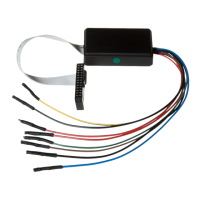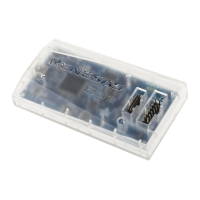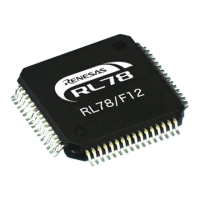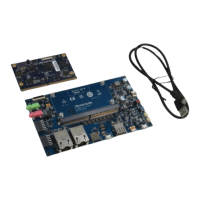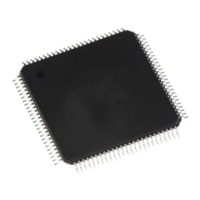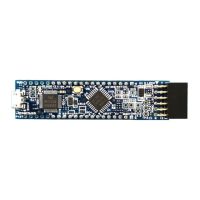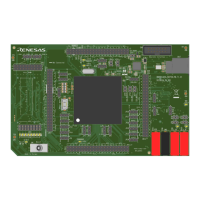Clock-Generating Circuit
M30240 Group
Rev.1.00 Sep 24, 2003 Page 24 of 360
• fAD
This clock has the same frequency as the main clock and is used for A-D conversion.
• fUSB
This is the 48mHz clock that is used for USB operation. This clock is generated from the main clock
by the frequency synthesizer circuit.
1.2.6.3 Clock Output
In single-chip mode, the clock output function select bits (bits 0 and 1 at address 0006
16
) enable f8 or
f32 to be output from the P37/CLK
OUT
pin. When the WAIT peripheral function clock stop bit (bit 2 at
address 0006
16
) is set to “1”, the output of f8 and f32 stops when a WAIT instruction is executed.
Figure 1.13 shows the system clock control registers 0 and 1.
Figure 1.13: System clock control registers 0 and 1
System clock control register 0 (Note 1)
System clock control register 1 (Note 1)
Symbol Address When reset
CM1 0007
16
20
16
Bit name FunctionBit symbol
b7 b6 b5 b4 b3 b2 b1 b0
CM10 All clock stop control bit
0 : Clock on
1 : All clocks off (stop mode)
CM15
X
IN
-X
OUT
drive capacity
select bit (Note 2)
0 : LOW
1 : HIGH
WR
CM16
CM17
Main clock division select
bit 1 (Note 3)
0 0 : No division mode
0 1 : Division by 2 mode
1 0 : Division by 4 mode
1 1 : Division by 16 mode
b7 b6
00
Reserved bit
Always set to
“0”
00
Symbol Address When reset
CM0 0006
16
48
16
Bit name FunctionBit symbol
b7 b6 b5 b4 b3 b2 b1 b0
0 0 : I/O port P37
0 1 : Invalid
1 0 : f
8 output
1 1 : f
32 output
b1 b0
CM01
CM02
CM00
Clock output function
select bit
WAIT peripheral function
clock stop bit
0 : Do not stop f1, f8, f32 in wait mode
1 : Stop f
1, f8, f32 in wait mode
WR
CM06
Main clock division select
bit 0 (Note 2)
0 : CM16 and CM17 valid
1 : Division by 8 mode
Reserved bit
Always set to "1"
Reserved bit
Always set to "0"
Reserved bit
Always set to "0"
Reserved bit
Always set to "0"
o
o
o
o
o
o
o
o
Note 1: Set bit 0 of the Protect register (address 000A
16
) to "1" before writing to this register.
Note 2: Changes to "1" when shifting to stop mode.
Note 3: Can be selected when bit 6 of the System clock control register 0 (address 0006
16
) is "0".
If "1", division mode is fiixed at "8".
Note 1: Set bit 0 of the Protect register (address 000A
16
) to "1" before writing to this register.
Note 2: Changes to "1" when shifting to stop mode.

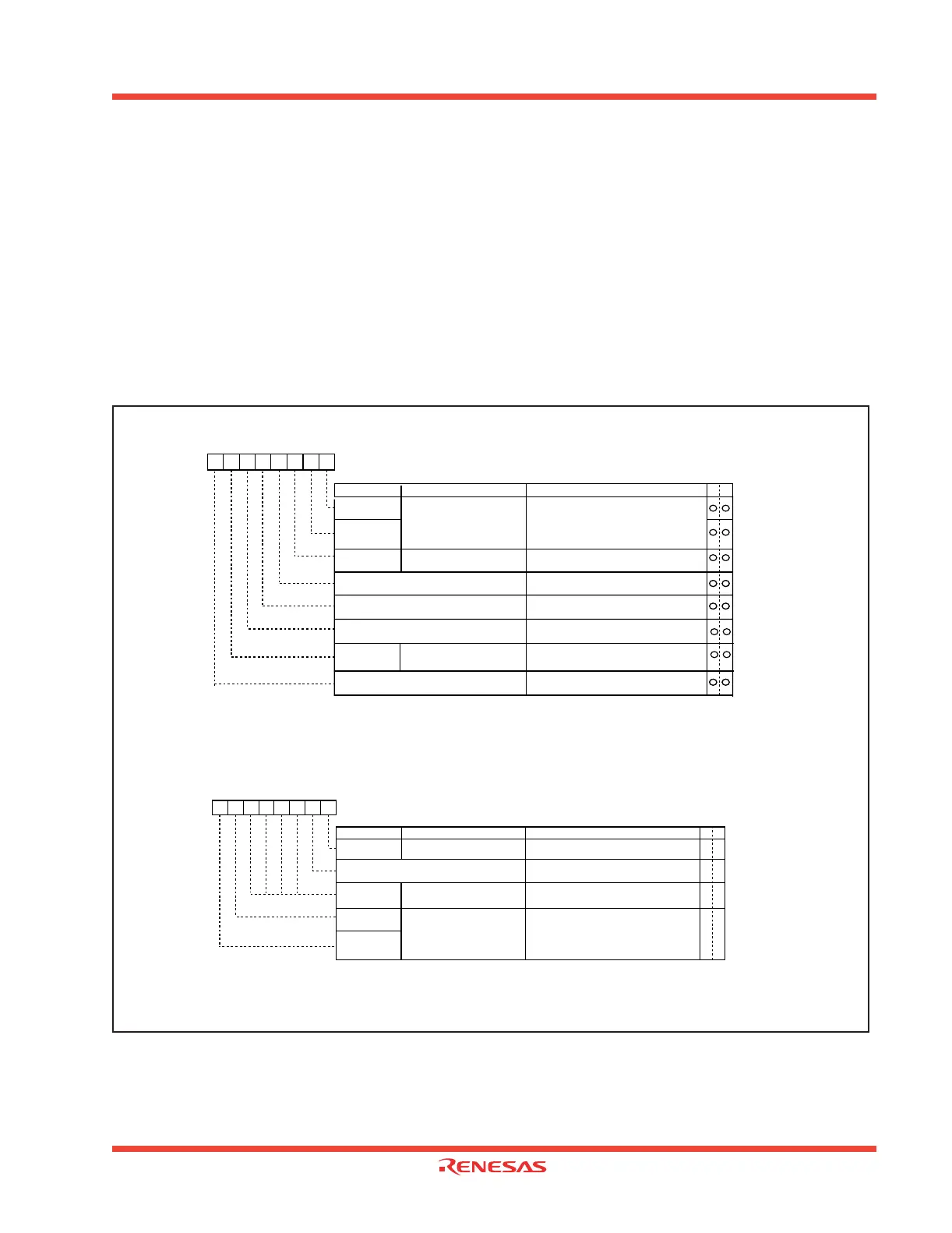